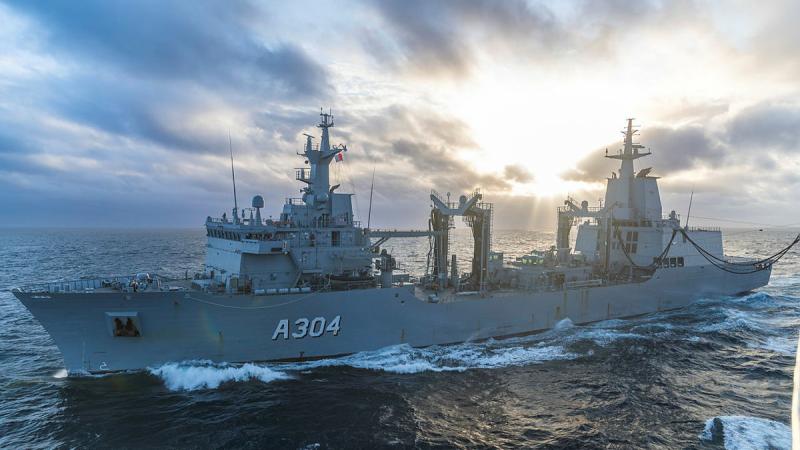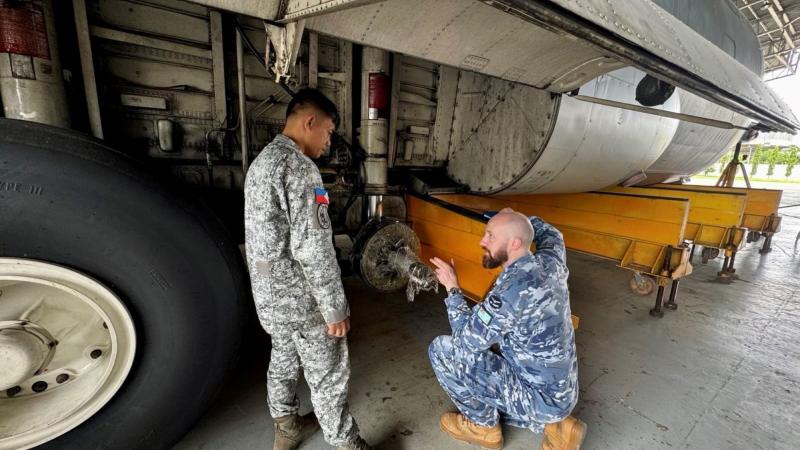13 August 2025
Addressing climate change is a shared responsibility for our society, from the choices individuals make to the way organisations go about their business.
As the Australian Government’s biggest consumer of fossil fuels, Defence has a unique leadership role to play.
From a strategic point of view, Australia also needs to improve its energy security. That is because Australia imports a large proportion of its fuel, and the shipping lanes our nation relies on are vulnerable to disruption in the event of a crisis.
To meet its social and strategic responsibilities, Defence is making a concerted effort to transition to a more sustainable future.
That means using science and technology to increase Defence’s energy resilience while reducing environmental impact.
One way Defence is taking action is through the adoption of sustainable aviation fuel (SAF), produced using components from renewable sources. Australia is rich in these renewable sources, allowing for potential domestic production of SAF.
Once blended with conventional jet fuel in accordance with fuel standards, it can be used in all types of Australian Defence Force (ADF) aircraft.
SAF is a drop-in fuel, which means no changes to aircraft or infrastructure are necessary for Defence aircraft to be refuelled with SAF.
Defence first demonstrated its use in 2023, with an aerobatic display of Air Force Roulettes fuelled by a 30 per cent SAF blend. Since October 2024, Defence has maintained a 5 per cent SAF blend in the fuel installation at RAAF Base East Sale in Victoria.
Behind the scenes, there is a small but dedicated team of Defence Science and Technology Group (DSTG) scientists who provide expert guidance to ensure fuels perform as intended.
'In fuel chemistry, you’re always looking for a needle in the haystack, and that needle is the thing that can turn a good fuel into a bad fuel pretty quickly, especially at elevated temperatures.'
Defence fuel chemist Dave Evans said although fuels might seem relatively simple, they can actually consist of thousands of different chemical compounds. Sometimes, a subtle change in composition drastically alters a fuel’s behaviour.
“In fuel chemistry, you’re always looking for a needle in the haystack, and that needle is the thing that can turn a good fuel into a bad fuel pretty quickly, especially at elevated temperatures,” Dr Evans said.
As the push to embrace sustainability gathers pace, the main focus of the DSTG fuels team will remain to support the ADF by making sure the fuel it is using is fit for purpose, whatever source it comes from.
Tori Guarnera is a Defence STEM cadet who works with Dr Evans at DSTG. During her work placement, she has been investigating the properties of renewable diesel fuels, made from animal fats and waste oils.
“The thing that I like about it is that it’s very relevant, because we all use fuels every day, and it’s a very important part of the Defence Force,” she said.
Ms Guarnera’s cadetship has not only given her the chance to get her hands on DSTG’s advanced chemistry equipment. She has also broadened her horizons by discussing science with colleagues.
“I thought that going into science I would be locked in a lab alone, a bit lonely, but it’s completely the opposite,” Ms Guarnera said.
“There are so many opportunities to connect with other scientists or engineers, which is a really brilliant way to learn.”
Bringing together the Australian scientific community to engage in discussions like these might lead to new discoveries, enabling Defence to strengthen energy security and reduce emissions.
Through the Defence Net Zero Strategy, Defence is committed to a 43 per cent reduction in emissions by 2030 and to achieving net zero by 2050.


